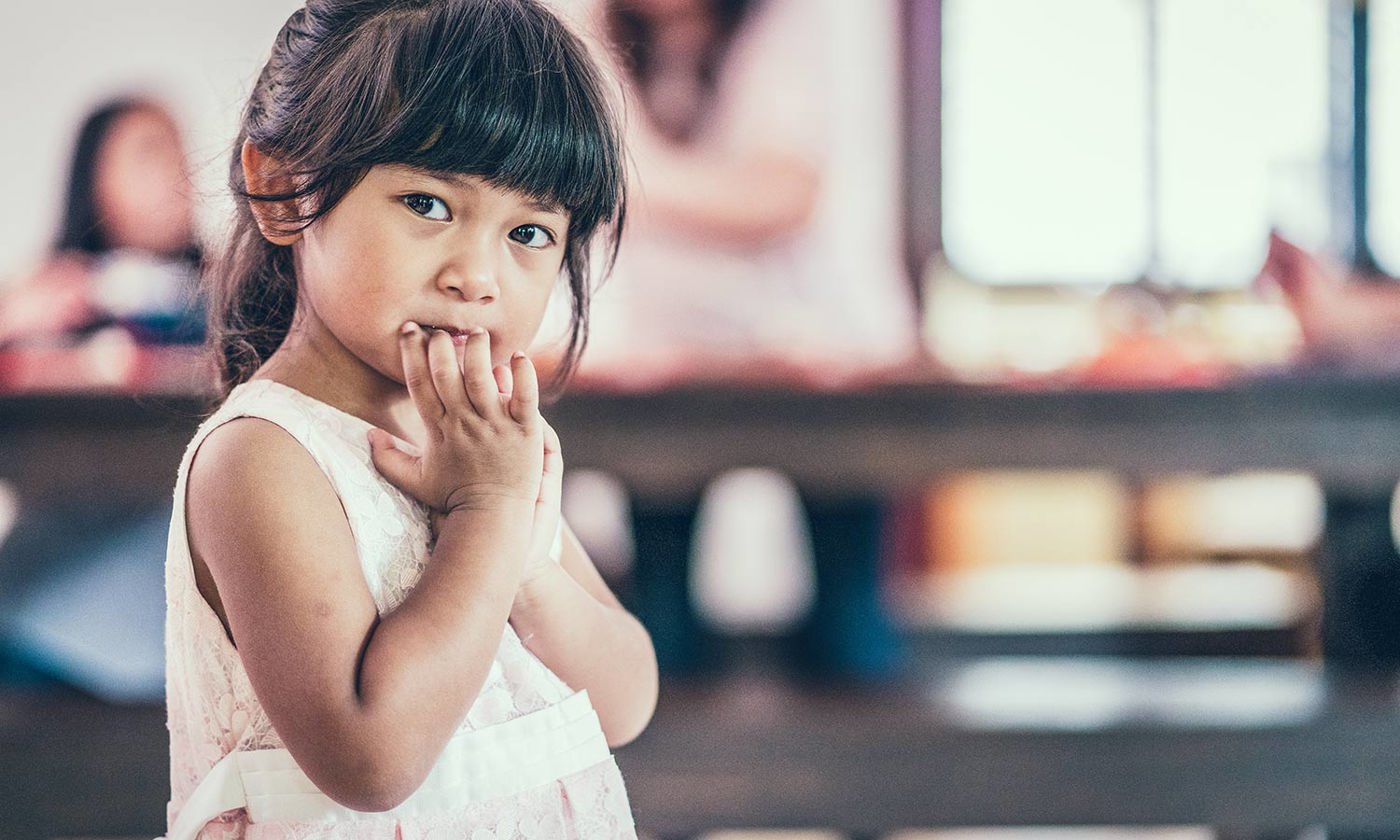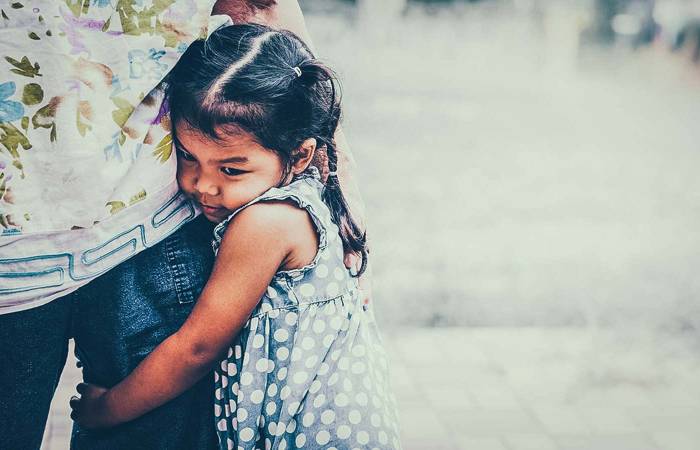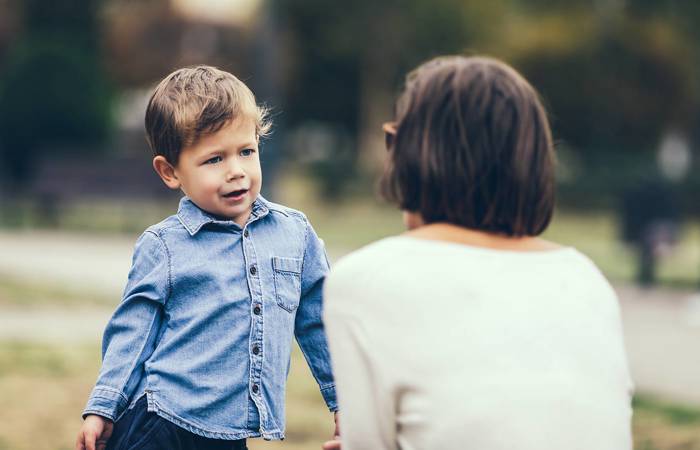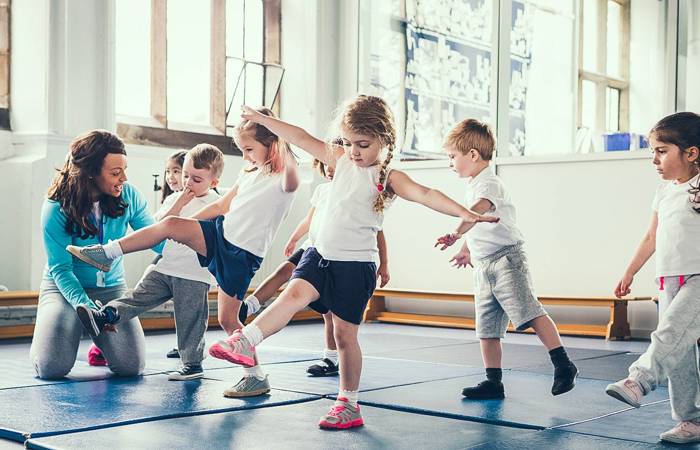Like what you see?
Sign up to receive more free parenting advice.
Thank you for subscribing to our newsletter!
Child Development

Credit: iStock.com/JGalione
Anyone with a shy child will be familiar with at least one of the following scenarios. Entering a room, your child clings to your leg. When greeted by another adult, your child looks away rather than responding. Later, while other children are playing, your shy child stays well clear.
How can a parent know which, if any of these scenarios, signals an issue like anxiety and could mean a child needs more support?
“A good rule of thumb is if you feel something like shyness is interfering in your child’s enjoyment of life then it’s something to think a bit more about,” says Associate Professor Brigid Jordan.
Associate Professor Jordan is a social worker and infant mental health researcher from the Murdoch Children’s Research Institute and believes this broader approach is more useful than thinking about whether your child’s shyness meets specific criteria.
But even when parents have cause for concern, the next step doesn’t mean rushing off to your nearest child psychologist and labelling the issue as anxiety.
“Instead, it should be a signal to pause, observe your child and think about the circumstances that are going on when they look shy. Are they just shy under certain conditions or with certain people?”, Associate Professor Jordan says.
Sometimes anxiety is masked. You might see a lot of aggression that might be driven by anxiety. [It’s another reason it’s] important go back to that central question and ask, ‘Is the way the child is managing their emotions and being in the world getting in the way of them doing the job of being a three, four or five year old?'Associate Professor Brigid Jordan
Stay up to date with the latest news and articles from First Five Years
Thank you for subscribing to our newsletter!
Parents should also consider their child’s general temperament. Are they simply a quiet, contained person who takes a while to warm up?
“There’s not a right or wrong. It’s about thinking, ‘What is my child’s style of approaching new situations and new people and are we introducing them in the right way?’”, she says.
As Associate Professor Jordan’s clinical work is mainly with under-fives, she sees lots of challenges arise at events like children’s birthday parties.
“You might take your three-year-old to a children’s birthday party and they hide behind you and don’t want to go and play with the other children,” she says.
“Well, there’s a level at which I can’t blame them. How many children do they know? Are kids tearing around everywhere? For some children it helps to stand on the edge of the party for a minute and do a stocktake, as the parent helps them map who they know.”
This pacing of transitions can do a lot to help a child who feels anxious in a social setting.
“Children may look shy or withdrawn because we are expecting too much of them immediately,” Associate Professor Jordan says.
Shy versus Anxious
The problem with labelling children as ‘shy’ or ‘anxious’ without a clinical diagnosis of the latter is that everyone’s definition of normal is different.
“We might use the word shy to describe a child that comes from a loud, rambunctious family. Whereas that child in another family might be considered the outgoing one,” she says.
Instead, parents should look for a change of behaviour and then consider if there are any triggers for it. Given that home is usually a child’s secure base, changes at home can be a good place to start.
“If there’s anything going on at home that is a big change from the point of the child, that can feel enormous to a child.
“It could be something like moving house, the birth of a new sibling, but it can also be things we as adults might not register like a change in furniture, a parent travelling more for work or a grandparent getting sick – any of that could cause some anxiety,” Associate Professor Jordan says, adding that children will react to significant family stressors such as marital conflict or family violence.
One of the challenges with anxiety is that it uses up brain space that may otherwise be used on learning new skills, being cooperative and developing more independence. They simply don’t have the energy.
This is one reason why anxiety can look like aggression or other negative behaviours.
“Sometimes anxiety is masked. You might see a lot of aggression that might be driven by anxiety. [It’s another reason it’s] important go back to that central question and ask, ‘Is the way the child is managing their emotions and being in the world getting in the way of them doing the job of being a three, four or five year old?’”, Associate Professor Jordan says.
Sleep problems can also stem from anxiety.
“Sleep is about separation. To sleep you have to close your eyes and have faith that the world will be the same when you wake up. That’s one reason that a change in sleep patterns can sometimes be a diagnostic clue that anxiety is present,” she says.
How can we help children with anxiety?
To help a child with anxiety, Associate Professor Jordan says step one is to listen and not assume we know the cause of a child’s worry.
“I always say that a parent needs to be a bit of an anthropologist. We are trying to join the dots [on behaviours],” she says.
Listening might help us discover they are worrying about something we had no clue they even knew about.
“They may have heard snippets of conversations and put together their own theory on something and it is making them anxious,” she says.
The second way to help is to think about the world from the child’s point of view.
“We almost need to do an audit. What is going on for them? Has anything changed in their secure base at home, at childcare or in their routine? Has anything changed in their understanding of things because they are a bit older?”, she says.
To do this, parents might think about each stage of what their child’s day looks like and consider issues such as whether the child is getting enough one-on-one quality playtime with parents, or autonomy about their routine.
While change in a routine can be difficult for busy families, Associate Professor Jordan says she tackles any necessary changes from two angles.
“I always think about both how we can reduce the demands on the child, and how we can bump up their emotional resources,” she says.
Where to go to for help
Maternal and child health nurses can be useful professionals to turn to in the first instance, as many will have completed some study on infant mental health.
Some psychotherapists specialise in infant mental health for under-fives and can help a child and their parents find a shared language for what is happening. A GP can provide a referral.







